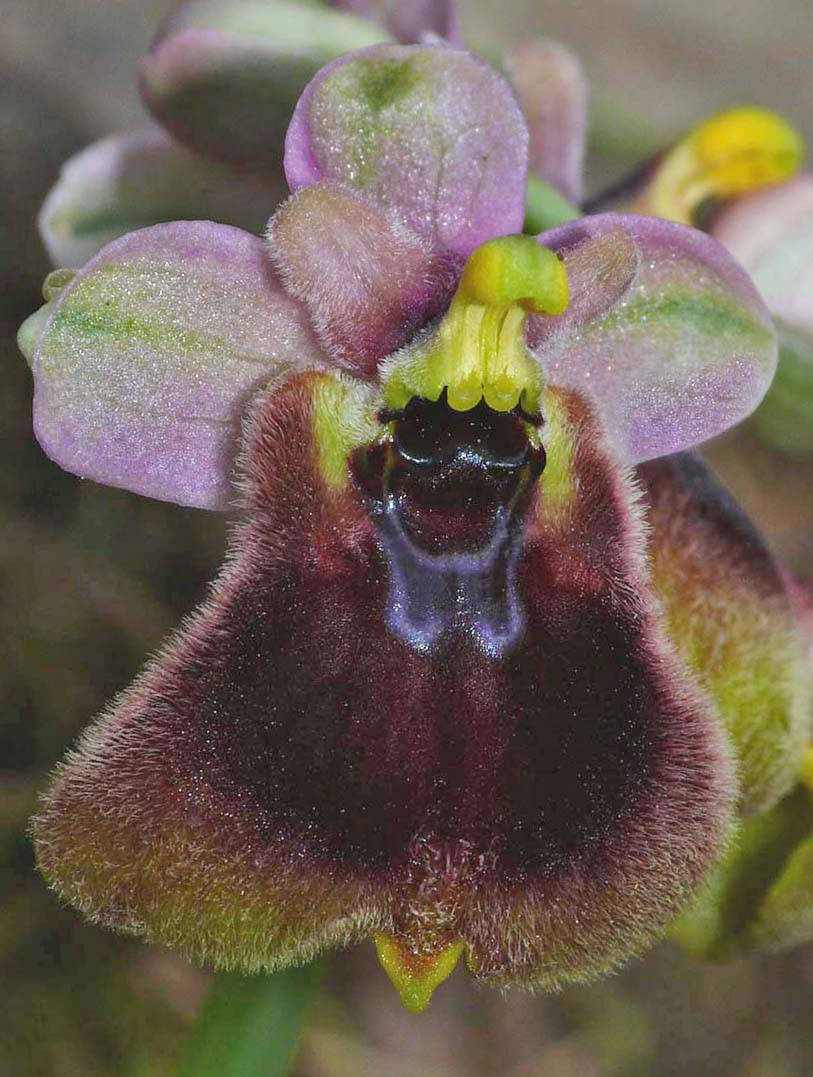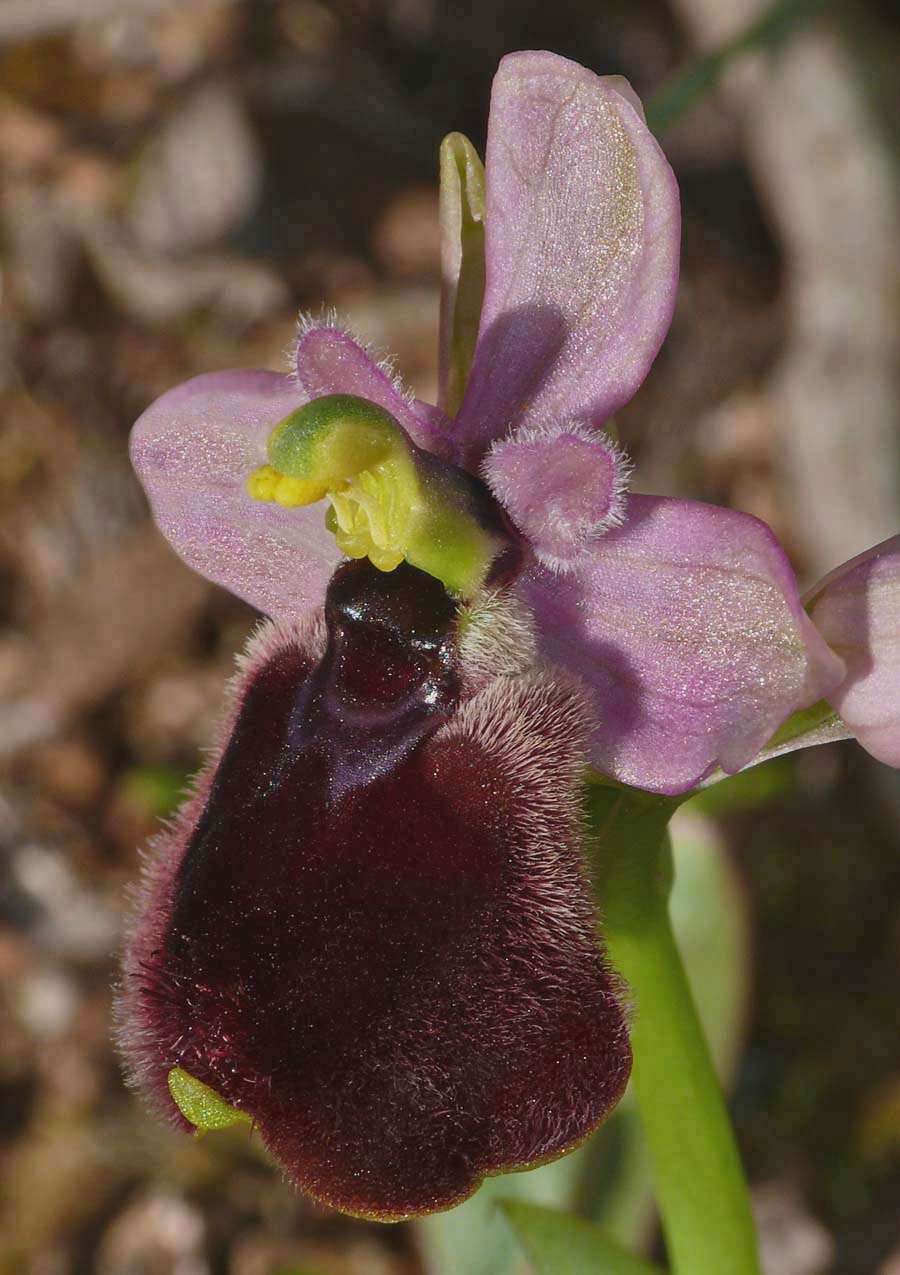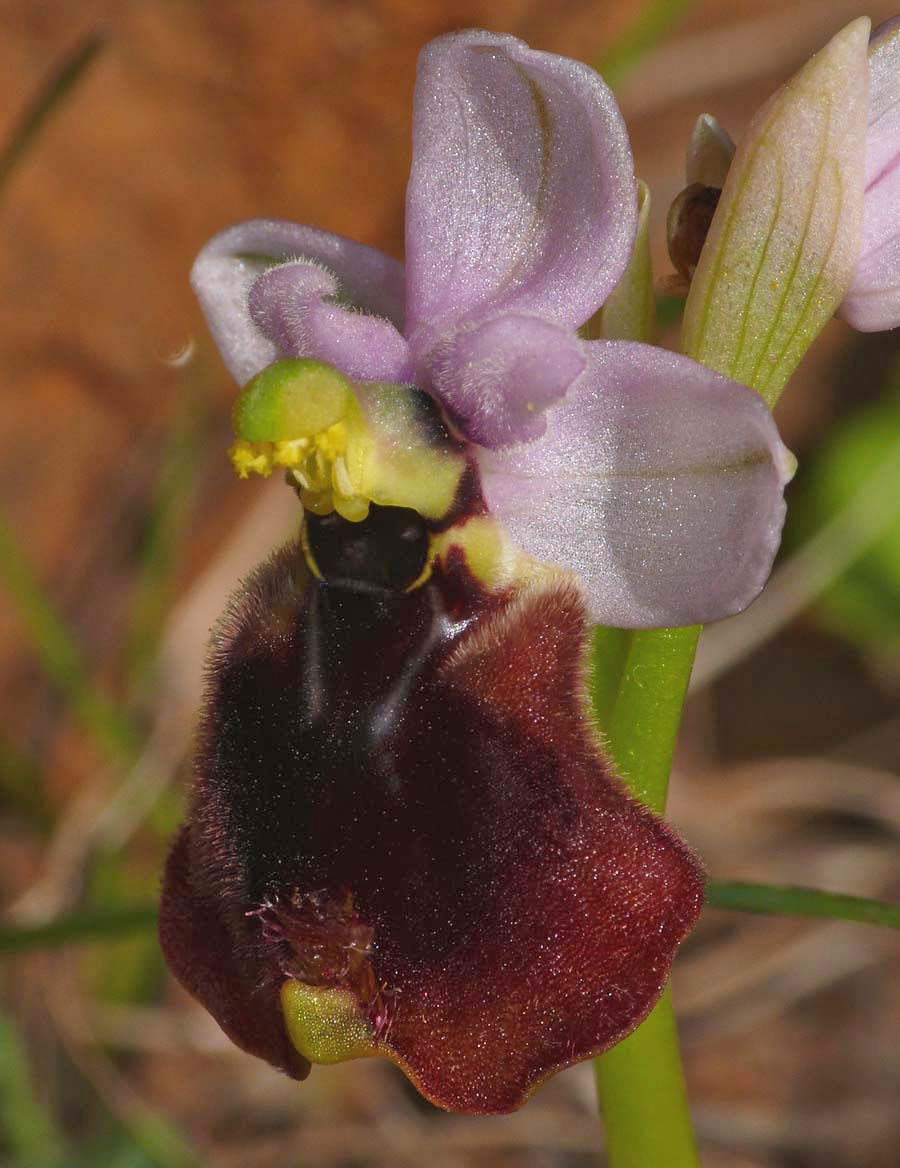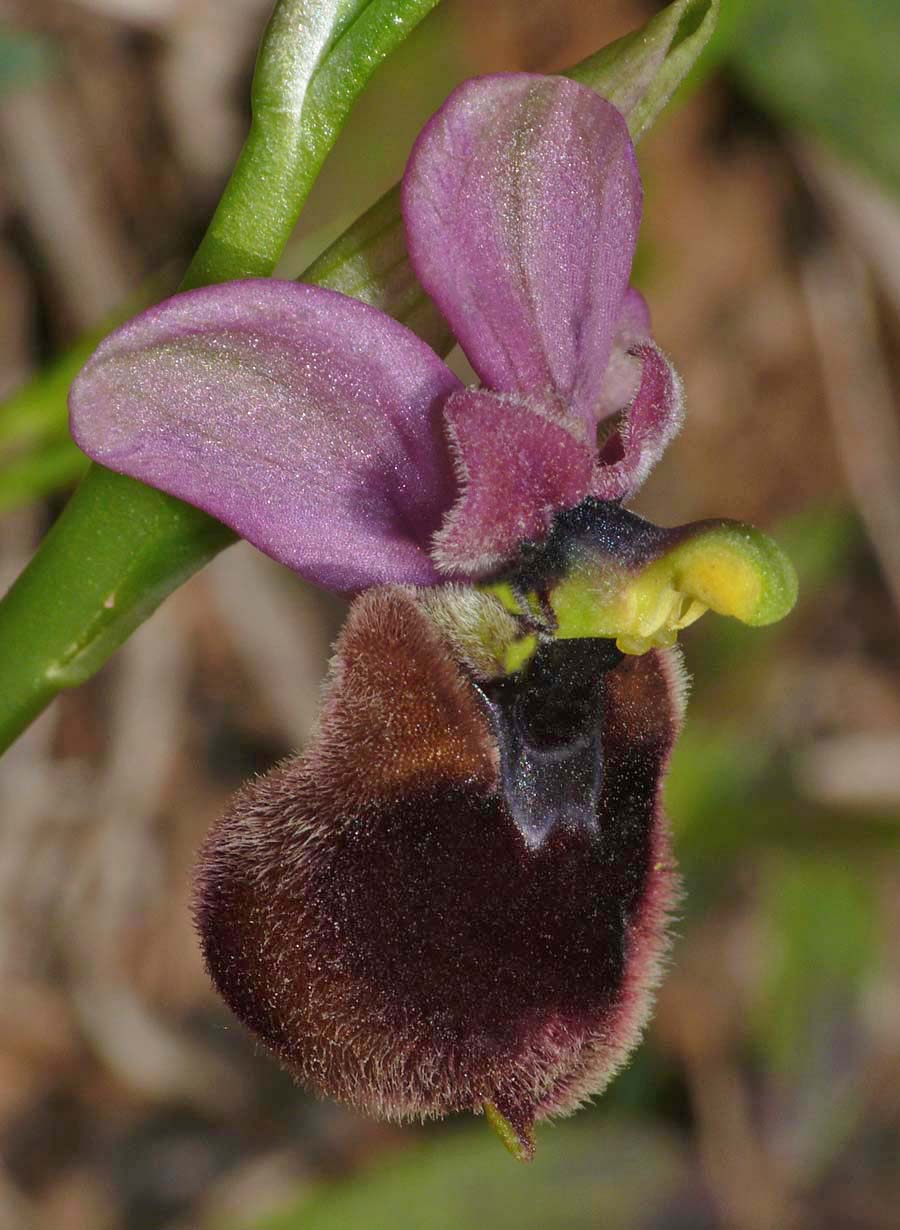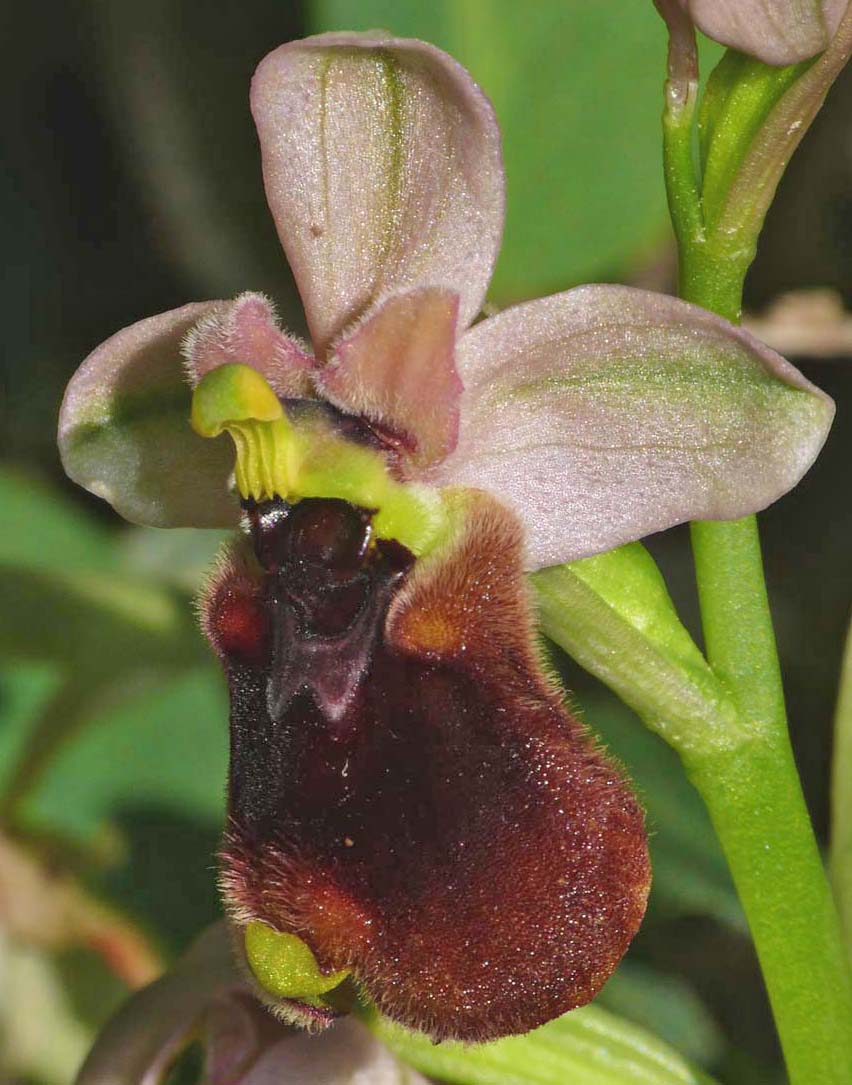O. normanii
was first described from Sardinia by Mr J. J. Wood in 1983 and belongs to the growing O. tenthredenifera group
of Ophrys. It is named after T. Norman, a contemporary British botanist.
This species is endemic to Sardinia where it's both highly localized and extremely rare, growing individually
or in small widely spread populations on alkaline soils in either full sun or frequently
mid shade. Its
preferred habitat is along roads or tracks in open, evergreen oak or mixed pine forest and in
these conditions can sometimes form small colonies of very mixed flower
forms, exhibiting various patterns and colouration. O. normanii had long been thought of as a hybridogenous species with O. neglecta and O. chestermanii as parents.
This view has recently been challenged however and a 2009 study
asserted that chemical, electrophysiological and genetic analysis did
not reveal any evidence of gene flow from either of these species, concluding that O. normanii is neither a hybrid or a hybrid species and has evolved entirely within the O. tenthredenifera clade.
O. normanii and O. chestermanii are sympatric, share a pollinator and bloom at the same time. Hybridisation would therefore seem a strong potentiality and yet there have been no reports of intermediate's. It would appear that sympatry, a common pollinator and coincidental flowering have not led to gene ingression, thus indicating the presence of reproductive isolation mechanisms that prevent any interspecific gene flow. O. normanii in its dark phase can appear remarkably similar to O. chestermanii and this is assumed to be adaptation to the same pollinator (see below). In the species stronghold among the mountains to the north of Domusnovus, it is possible to find O. normanii in forms that at one end of the scale, are typical of the tenthredenifera group and at the other, specimens virtually indistinguishable from O. chestermanii.
O. normanii and O. chestermanii are sympatric, share a pollinator and bloom at the same time. Hybridisation would therefore seem a strong potentiality and yet there have been no reports of intermediate's. It would appear that sympatry, a common pollinator and coincidental flowering have not led to gene ingression, thus indicating the presence of reproductive isolation mechanisms that prevent any interspecific gene flow. O. normanii in its dark phase can appear remarkably similar to O. chestermanii and this is assumed to be adaptation to the same pollinator (see below). In the species stronghold among the mountains to the north of Domusnovus, it is possible to find O. normanii in forms that at one end of the scale, are typical of the tenthredenifera group and at the other, specimens virtually indistinguishable from O. chestermanii.
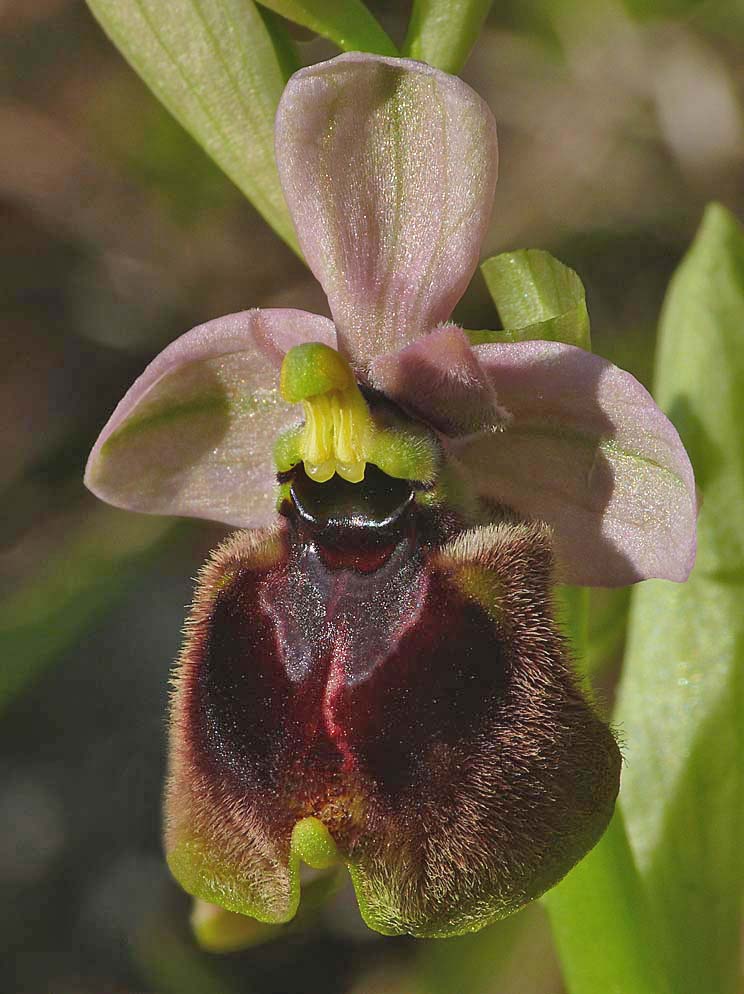
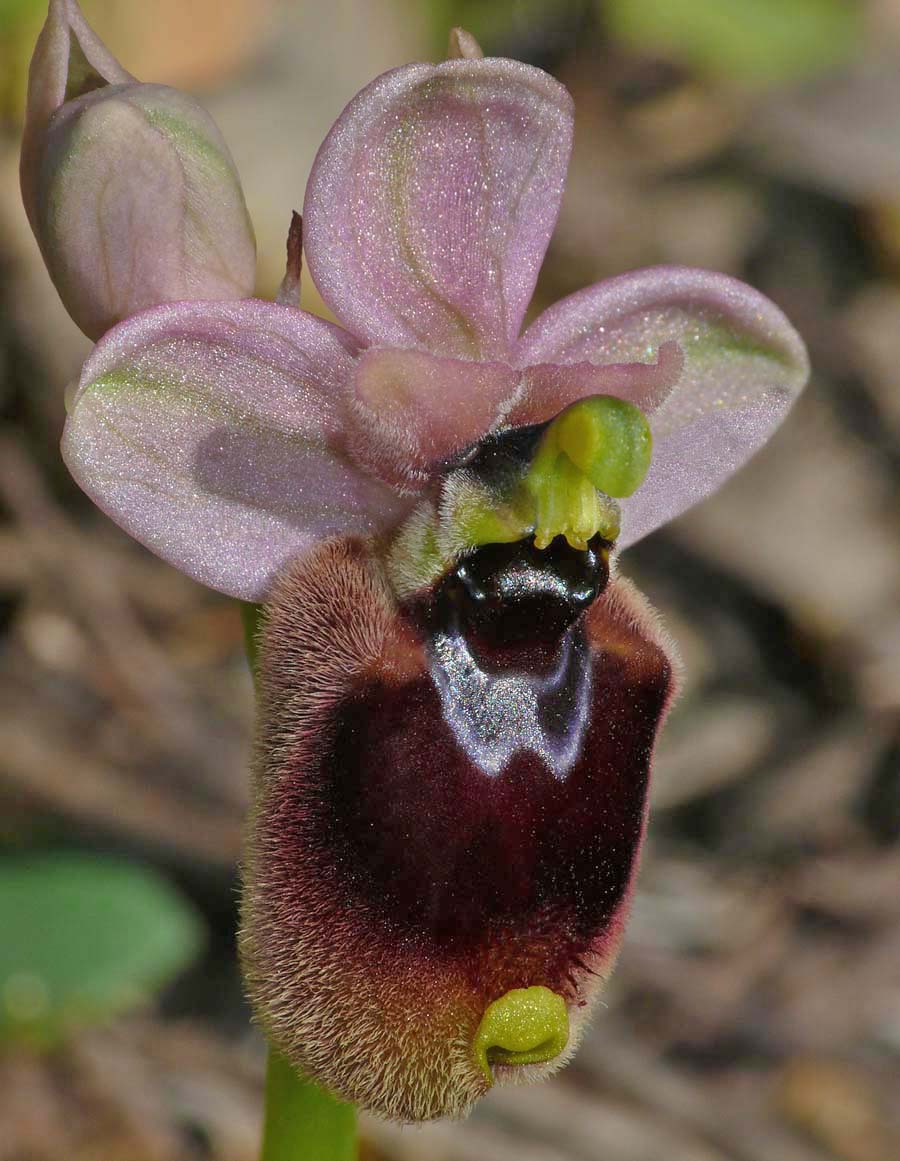
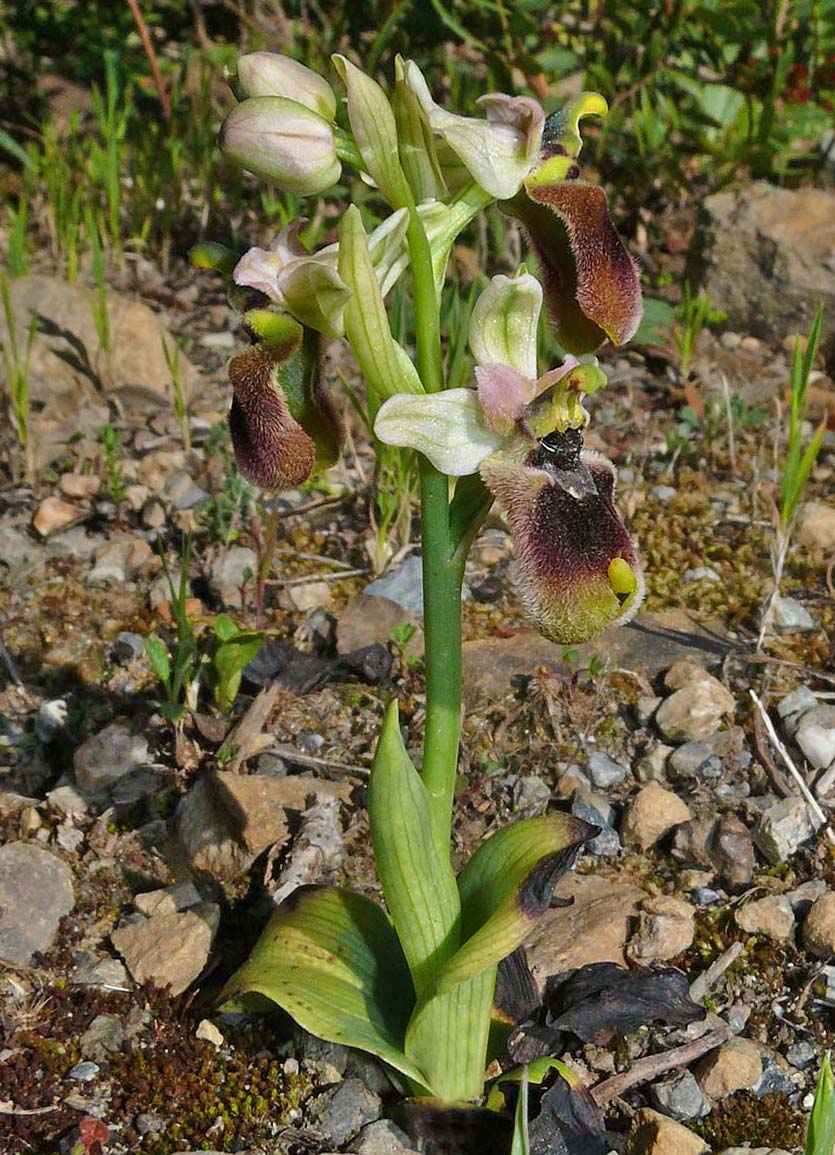
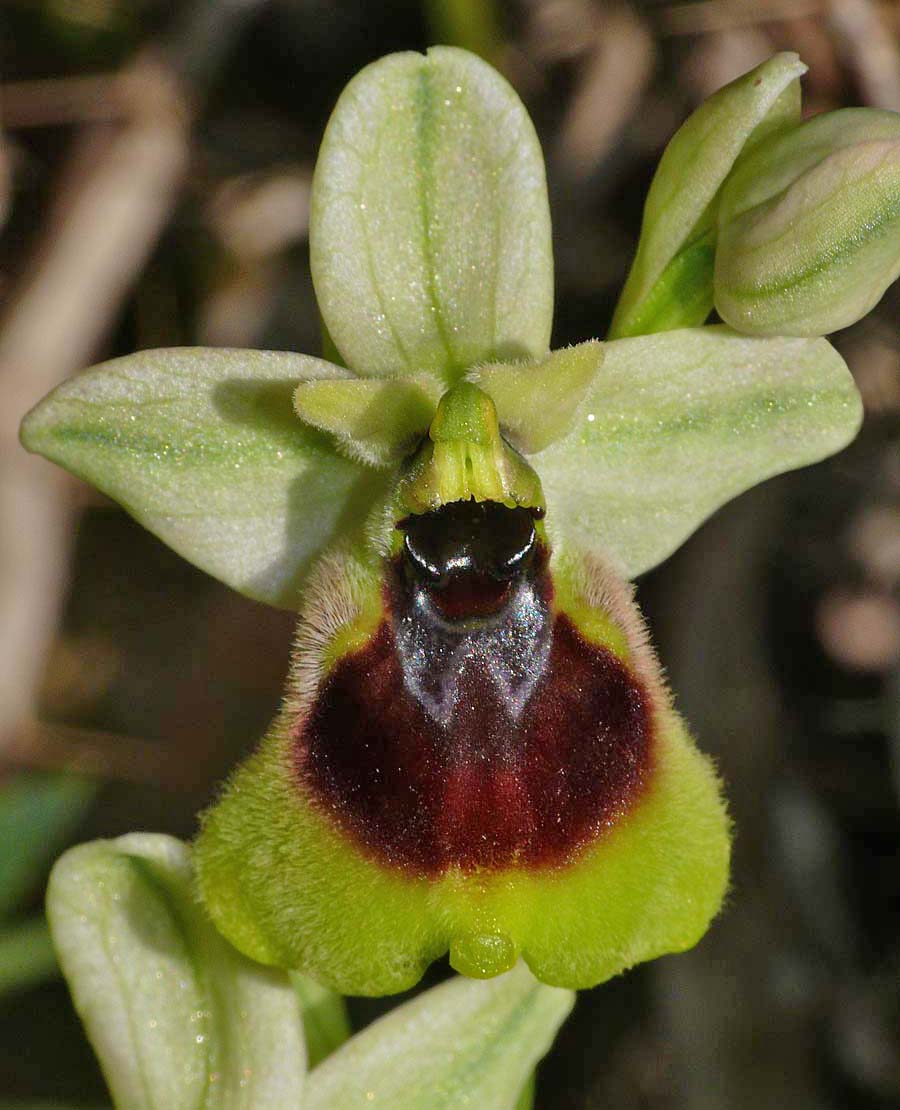
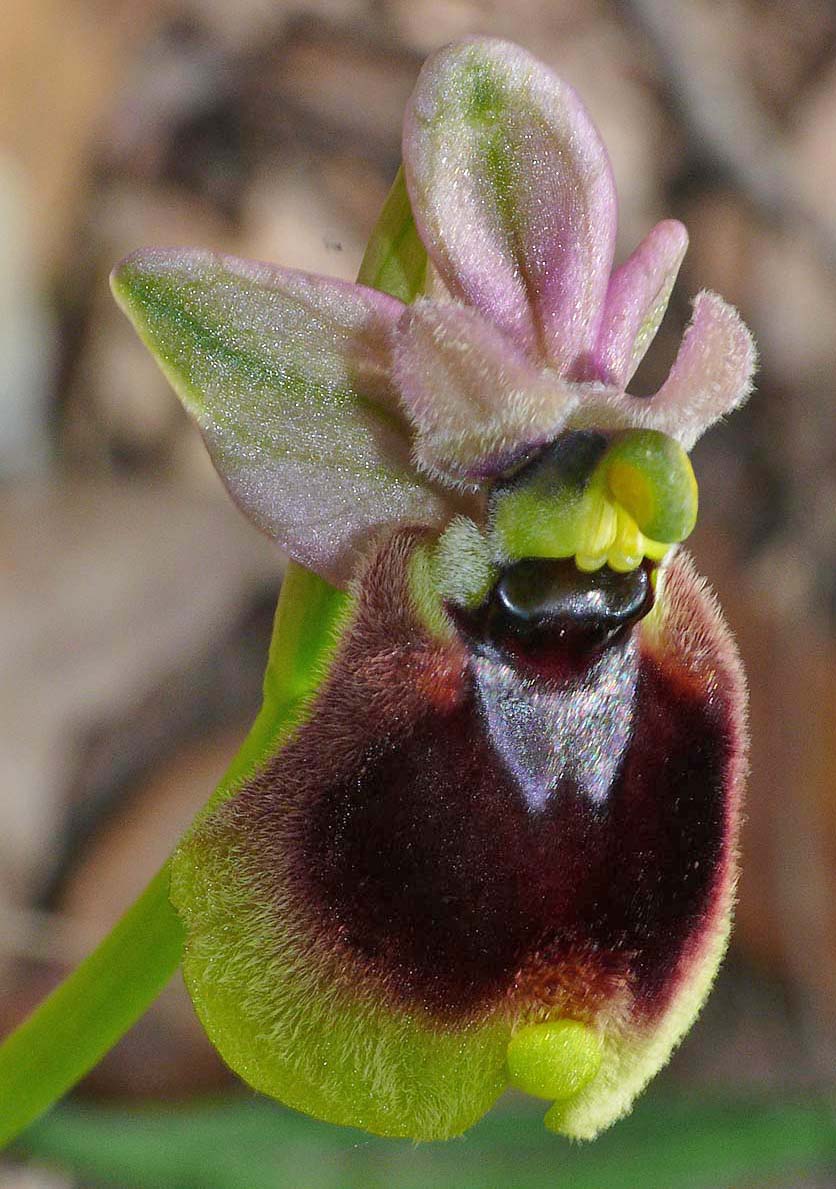
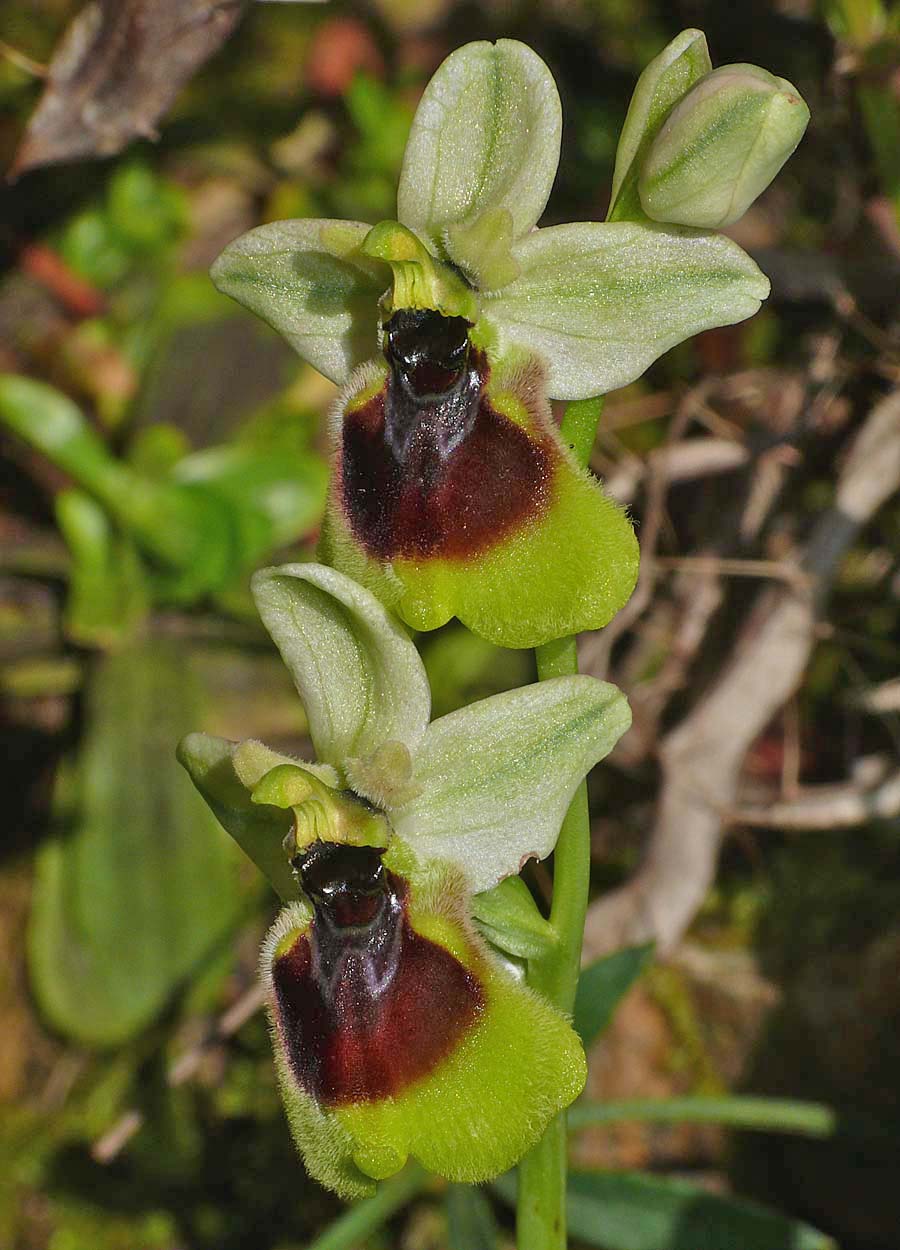
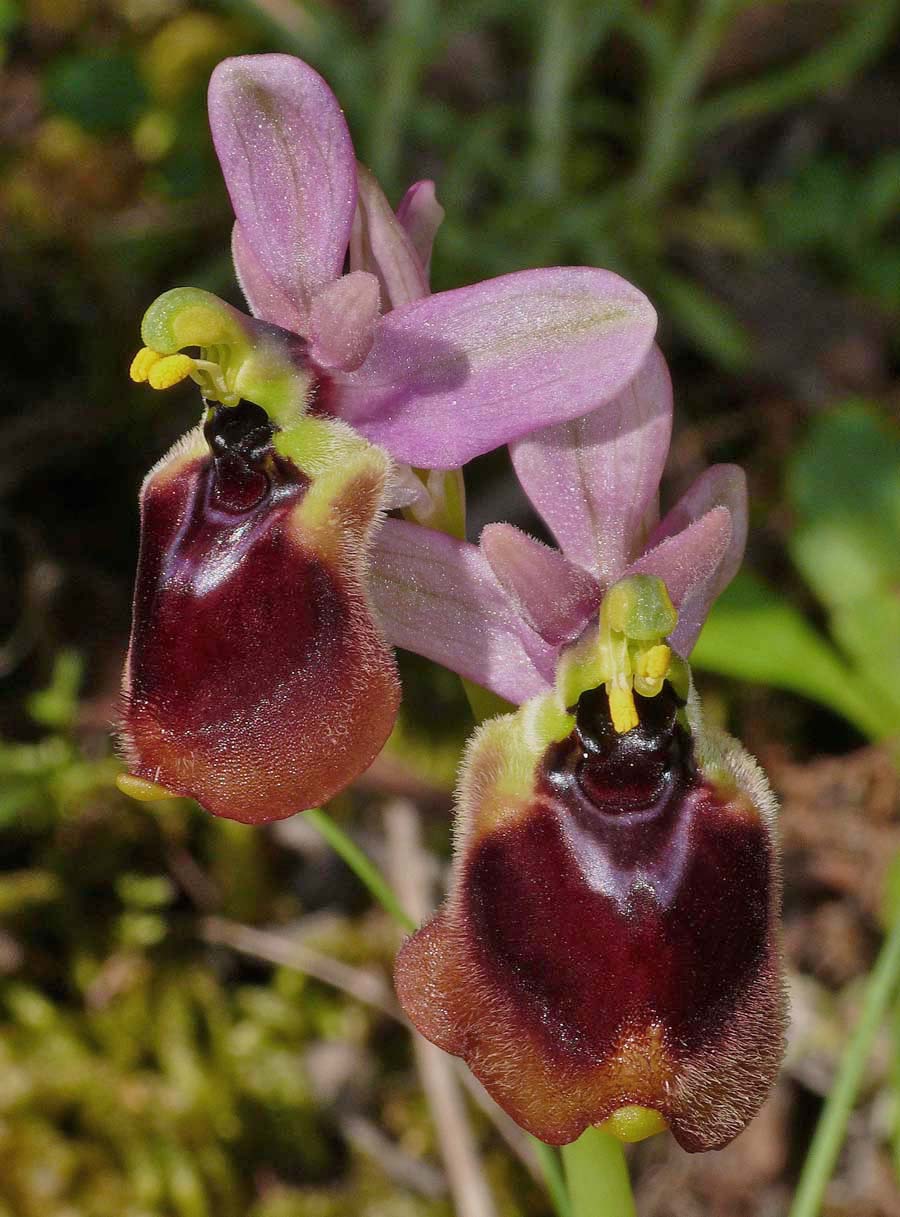

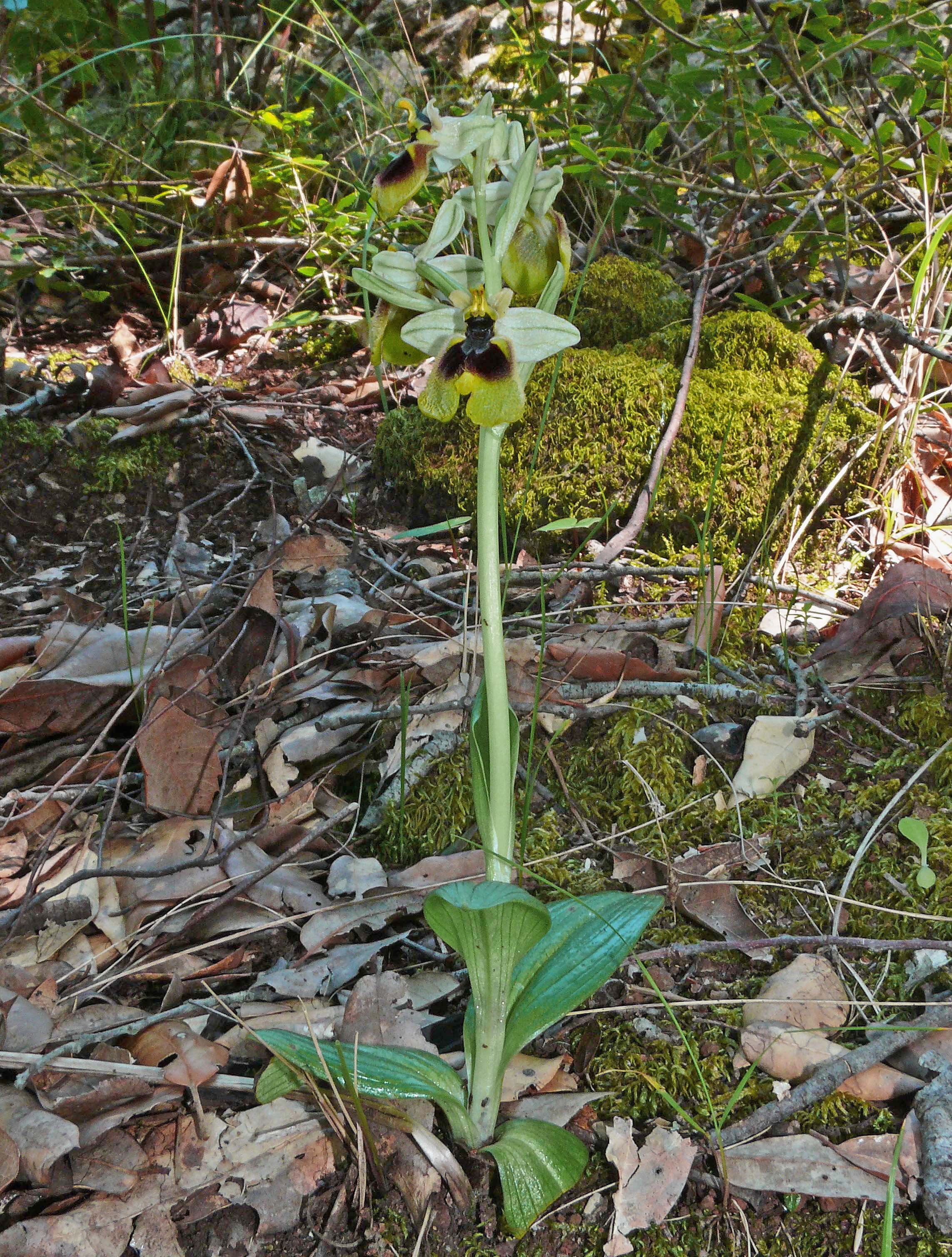


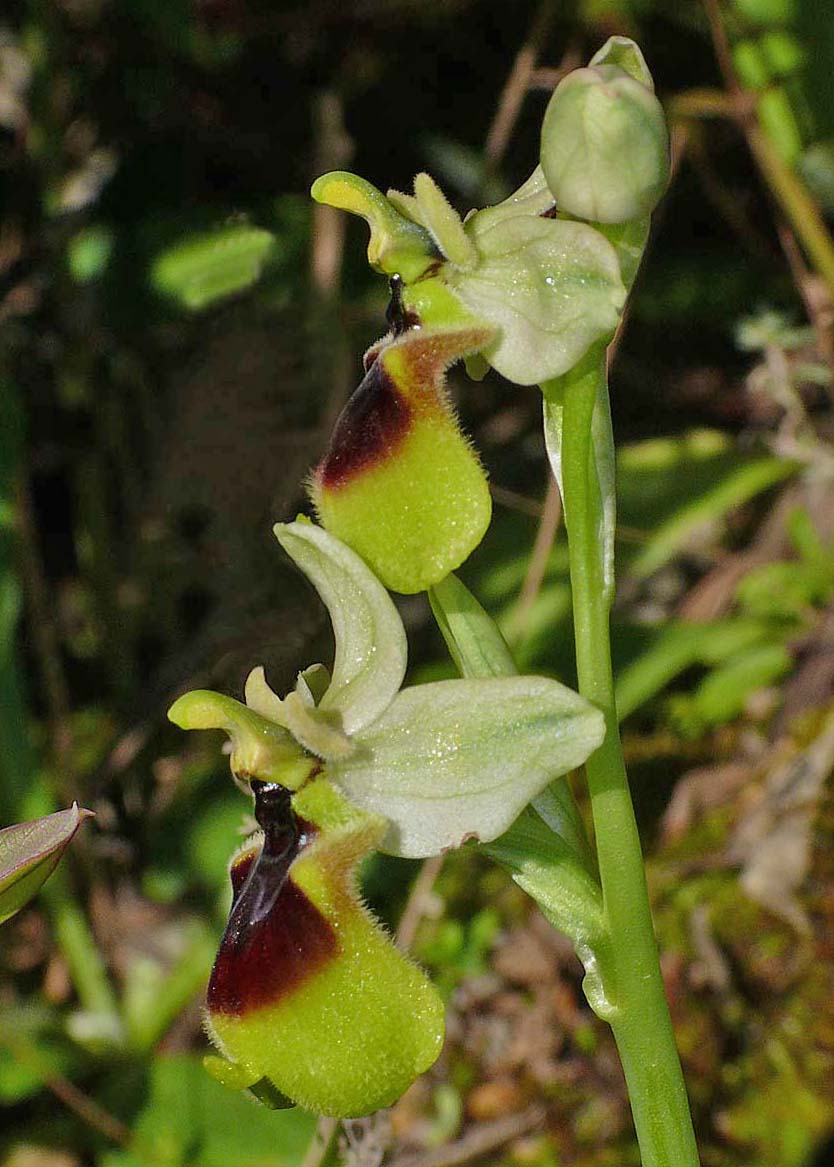
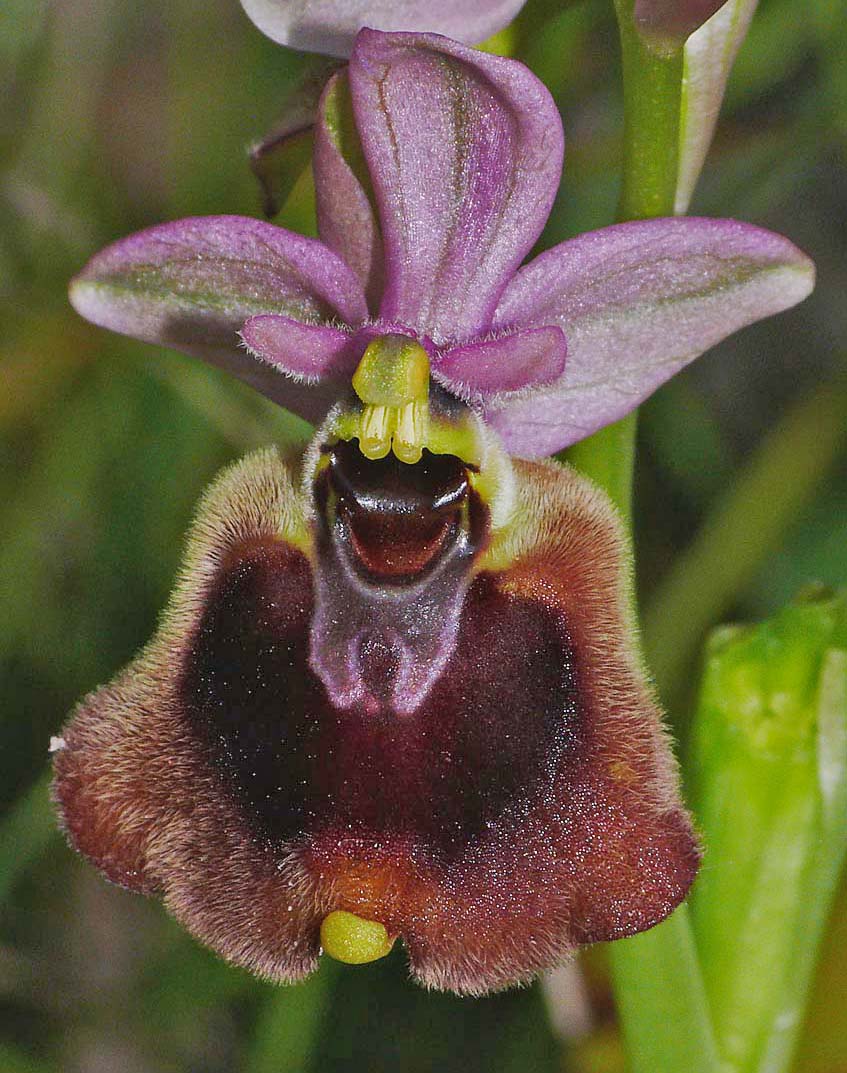
The following group of photographs depict examples of dark phase O. normanii that strongly resemble O. chestermanii. The most significant feature that differentiates these two species is the perianth where the sepals in particular exhibit typical O. tenthredenifera group characteristics IE:- pink, lightly green veined and rounded. As mentioned above, the lip similarities are striking and this is thought to be an adaptation to the shared pollinator (Bombus vestalis).
